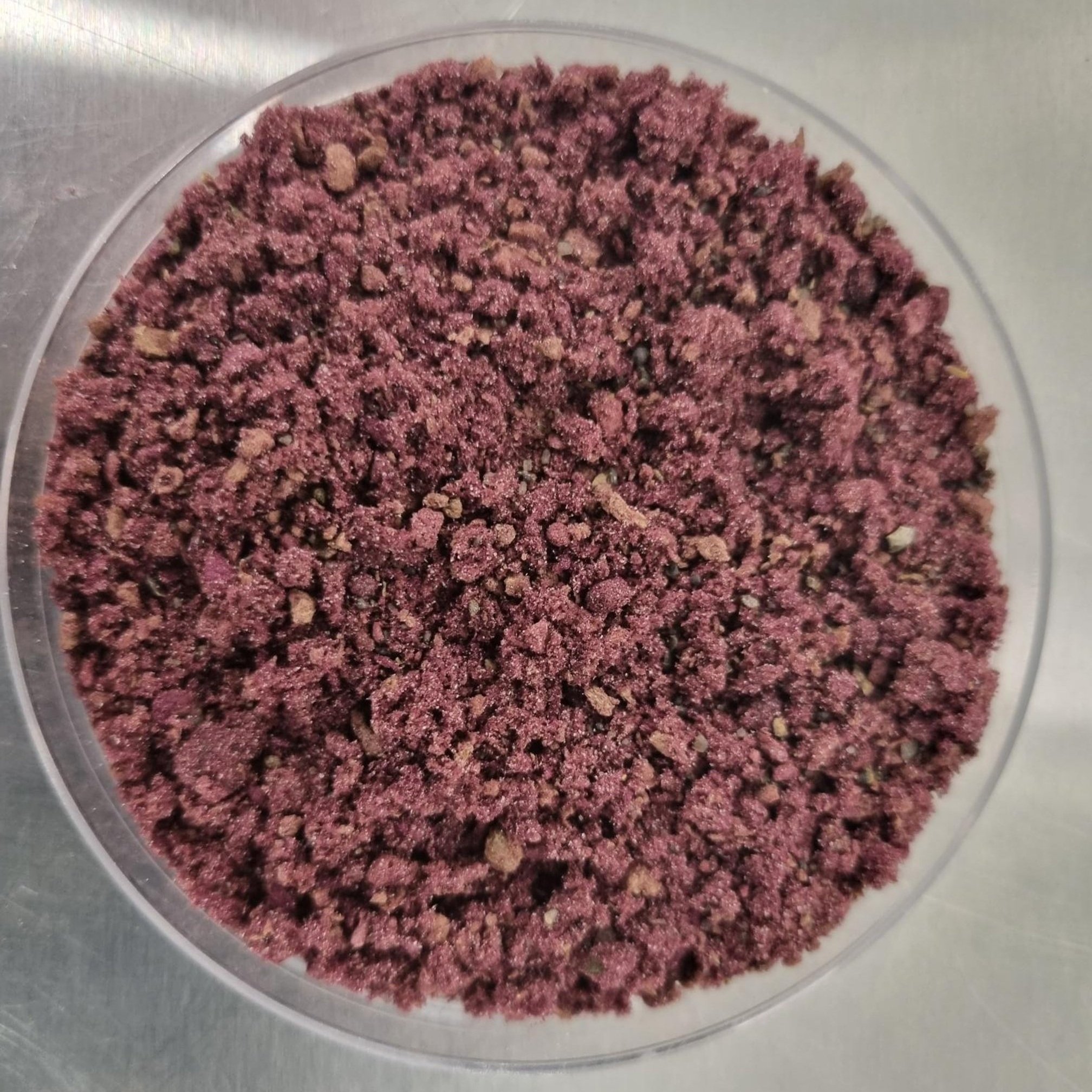CH4 Global: “This is no longer an R&D experiment”
Methane Tamer™ finished product. Image courtesy of CH4 Global.
When FutureFeed was tasked by CSIRO to commercialise the discovery that Asparagopsis seaweed could be included in livestock feed to reduce methane emissions, CH4 Global was one of the first companies to join our mission. The company signed a licence agreement with FutureFeed and set about creating the know-how and systems to cultivate and process Asparagopsis into a livestock feed product.
Four years on, CH4 Global has seen many milestones.
The company was the first to sell Asparagopsis commercially in mid-2022.
It recently achieved a US$29 million capital raise.
The first CH4 Global EcoPark is to be built in Louth Bay on South Australia’s Eyre Peninsula for terrestrial cultivation of Asparagopsis seaweed. The energy-efficient facility will include seedling hatchery, patented in-ground ponds for growing, as well as harvesting and drying technology.
The company has just announced a strategic partnership with multinational conglomerate, Lotte International. The intent of the partnership is to bring the company’s Methane Tamer™ product to South Korea. The partnership includes initial supply to the Lotte-owned Australian feedlot, Sandalwood, for up to seven thousand head of cattle. As CH4 Global's exclusive partner in South Korea, Lotte will provide up to four million cattle with the enteric methane-reducing feed supplement. This partnership builds on previously announced partnerships with CirPro and Ravensworth.
We caught up with CH4 Global CEO Steve Meller recently to ask him what he felt the company’s greatest achievements have been so far.
“It's a rewarding feeling to think back and reflect on the past 4.5 years journey,” Mr. Meller said.
“There have been a few twists and turns, but we have stayed true to our focus on climate change impact, at scale, with urgency. Today, we can dimension that to gigatonne reductions in greenhouse gas emissions by 2030. We've built an incredible team, partners and our funders that have gotten us to where we are now, and we are in the process of adding to our company as we now build scale for the global markets.
“We have chosen a very stepwise, purposeful approach to our path to reach our objective of impacting climate change globally, at scale. As with any new capability or any new company, the ability to create and build scale comes from three areas. First, you have to have a product that is profitable, or can project to be sufficiently profitable in a reasonable time scale. Second, you have to be able to demonstrate demand. And third, you have to align on access to large-scale infrastructure project financing to build the facilities to service the markets - all in a profitable manner. All three of these must align for us to achieve our goals of global impact at scale with urgency.
“Fortunately for us, the purposeful path we've chosen has enabled us to be well-positioned for 2024 and beyond, to demonstrate commercial scaling of our business with key partners.
“2024 and beyond promise to be incredibly exciting times not only for us as a company but for the entire industry focused on climate impact for ruminants - the single largest source of anthropogenic methane on the planet.
“This is no longer an R&D experiment - for us it is on track now to be globally scalable through enabling profitability of the products without the need for any subsidies.”

